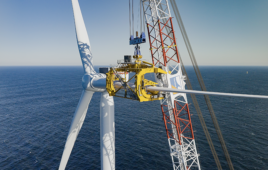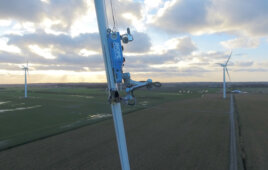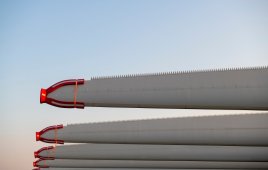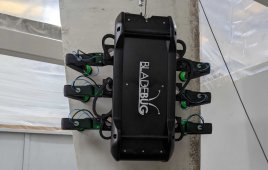Clir has developed cutting-edge software to detect and quantify the impact of leading-edge erosion, enabling clients to identify and request repairs or replacement of blades at the most economically sound time.

By using proprietary advanced analytics and machine learning, renewable energy AI software company Clir says that it can detect and quantify the impact of leading-edge erosion on wind-turbine blades.
Mechanical and technological advancements have improved wind-turbine design with ever-increasing tip heights and rotor speeds. These new designs increase the power production making them more productive and profitable. However, turbines improved designs and increased power-production capabilities have led to new problems and turbine design standards have not kept pace with the rapid developments in the market.
For example, IEC standards do not account for the impact loads of rain droplets. At higher tip speeds of modern turbines, these droplets eat away at the blades and lead to early deterioration and, at some heavy rainfall sites, causes infant mortality of blades on new projects in their first few years of life.
“Leading-edge erosion is a common problem we are seeing with our clients,” says Andrew Brunskill the lead of Data Analytics at Clir, “Detecting leading-edge erosion during a projects warranty period, so maintenance is able to be planned and scheduled, has a huge and positive financial impact.”
The data from wind farms is inherently poorly structured and noisy, which makes it difficult to parse out the leading-edge erosion impact from items like turbine control changes, environmental conditions, and other performance degrading conditions. Thus, making it very difficult to build a business case to repair or replace blades. To solve this problem, Clir created a product feature that enables the early detection of leading-edge erosion.
“Detecting leading-edge erosion is complex. It took a whole team of domain, data science, and software experts to create data architecture that isolates leading-edge erosion from other underperformance issues,” says Gareth Brown, the CEO of Clir. Clir’s technology is allowing everyone from site managers to financiers to understand the way assets operate the way that they do. Brown adds: “By providing the industry with a much deeper understanding of their wind-turbine performance we are helping lower the cost of wind energy to drive forward the business case for greater global renewable energy deployment.”
Clir’s software is able to apply domain expertise, advanced analytics, and machine learning to separate leading edge erosion and induce underperformance from other underperformance issues to quantify the financial impact over time and into the future.
“What makes our leading-edge erosion capabilities so profound is that the information is made readily available to Clir users across their entire portfolio, providing clear and defendable supporting information to act on. Leading-edge erosion can lead to production losses greater than 5%,” says Brown. “This is just one part of a large suite of analysis tools available in our software, addressing numerous common areas of project underperformance. In a short time, Clir has established an asset base of just under 3GW with clients seeing AEP gains up to 5%. With improvement possibilities like this, the software allows significant increases in wind farm profitability.”
Filed Under: Blades, News, O&M




